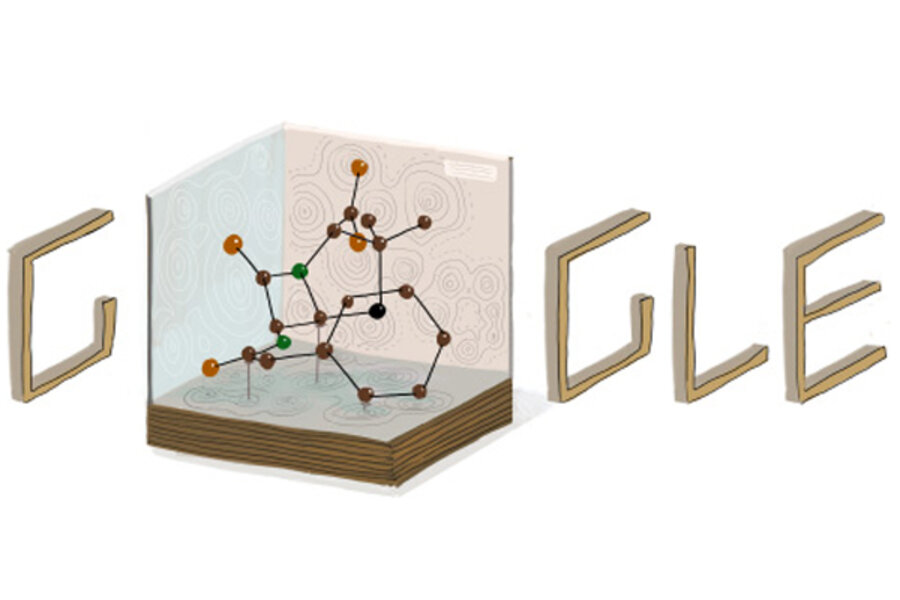Dorothy Hodgkin honored with Google doodle for seeing the invisible
Loading...
What do you see when you look into a crystal? Rainbow colors? Distorted views? The future? For Dorothy Hodgkin, crystals revealed the structure of invisible things. She used X-rays to discover the building blocks of molecules and to map out these complex chemicals in three dimensions. Google honored her work Monday with a doodle in celebration of the 104th anniversary of her birth.
Dr. Hodgkin had become interested in crystals as a child. When she was 16, she learned about the work of William Henry Bragg, a physicist who had recently discovered ways to analyze crystals with X-rays. The process involved shining an X-ray through a crystal and observing the patterns that came out the other side. By studying these diffraction patterns, scientists could tease out the molecular structure of the crystal. Little did she know at the time that these techniques would become the foundation of her long, illustrious career.
After graduating from the University of Oxford in 1932, Hodgkin worked in a lab that specialized in X-ray crystallography with biological molecules. In time, she mapped out the shape of penicillin, which allowed others to create synthetic versions of the chemical. She uncovered the structure of vitamin B12, for which she received the Nobel Prize in chemistry in 1964. Then, after decades of research, she finally figured out the molecules that make up insulin.
"Hodgkin remains the only British woman to have ever won one of the science Nobels," writes The Guardian, "but the British press were unable to forget her gender. The Daily Mail reported at the time: 'Oxford housewife wins Nobel', while the Telegraph wrote: 'British woman wins Nobel Prize – £18,750 prize to mother of three.' "
Hodgkin retired from science in 1977, but continued to work on her other lifelong project: advocating for peace worldwide. After World War I, she worked with the League of Nations and, later, with the group Science for Peace. This advocacy got her in hot water with the United States government. During the "red scare" of the 1950s, the US denied her visa because of alleged ties to communist groups. "She was later allowed into the country with special permission of the attorney general," writes PBS in its short biography on Hodgkin. "In 1990, her passport was approved 'for indefinite reentry.'"
For more on how technology intersects daily life, follow Chris on Twitter @venturenaut.







